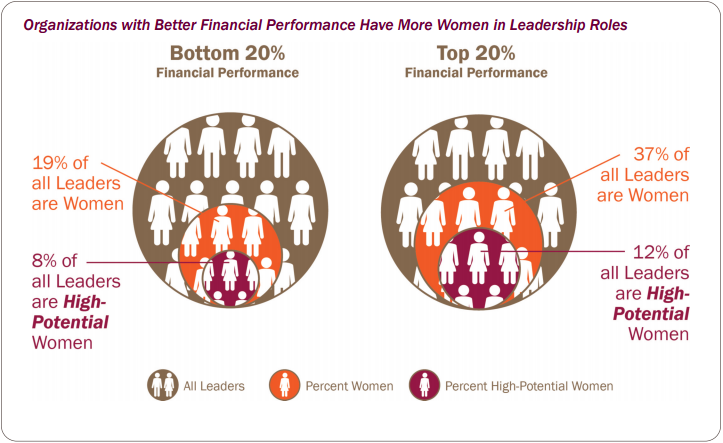Female leadership: reality & social chance
6 April, 2016Our previous post described how, in some contexts, the relation of women and technology is perceived almost as a deviation of the conventional ideas of femininity. But technology is not the only field in which women are still underrepresented. A similar situation is found on leadership positions.
According to the Global Leadership Forecast 2014-2015 elaborated by Development Dimensions International (DDI): “Even with a greater academic achievement and an increased presence in global workforce, women are underrepresented in leadership and are more likely to be found in lower-level than higher-level leadership roles”.
This statement is clearly supported by Catalyst’s Women in Standard & Poor’s 500 Index. In the main US companies, women only hold the 4% of CEO positions.
However, promoting the participation of women in technology or leadership positions is a claim not only based on moral justice grounds, but it is also beneficial for the entire society. Thus, according to the report developed by McKinsey in 2015, “gender-diverse companies are a 15% more likely to outperform”. Additionally, data from the Global Leadership Forecast 2014-2015 proves that companies with a better financial performance have the greatest number of women in leadership roles.
Source: Global Leadership Forecast 2014-2015 – Development Dimensions International
According to Louann Brizedine’s book “The Female Brain” women’s brain has some advantages with regard to leadership skills.
- “The anterior cingulate cortex, which weighs options and makes decision, is larger in women, making us slower (but often better) at decision-making.
- The prefrontal cortex, which keeps emotions in check, is larger in women, making us more likely to resolve conflicts and avoid aggression.
- The insula, which processes gut feelings, is larger in women, making us more intuitive and better at “reading people.”
- The hippocampus, the area of the brain responsible for memories, is larger and more active in women.
- Lower levels of testosterone help female brain circuits in communication, gut feelings, emotional memory, and anger suppression.”
Book Summary by: Taylor Mallory Holland
To change the current situation would require a reconceptualization of the collective view of femininity.


